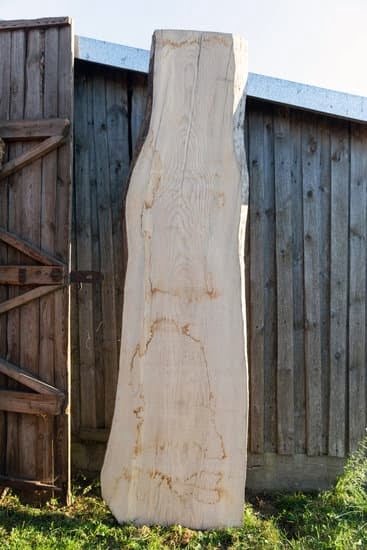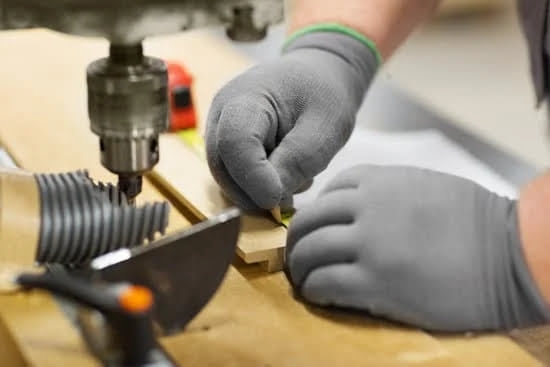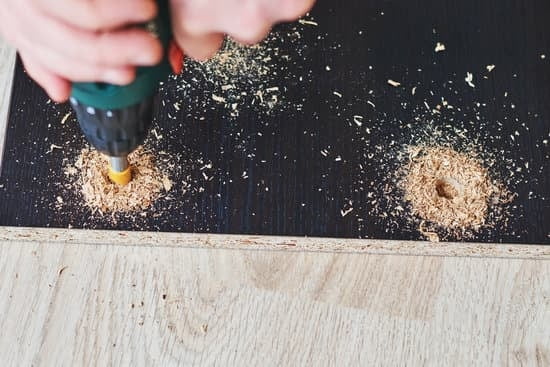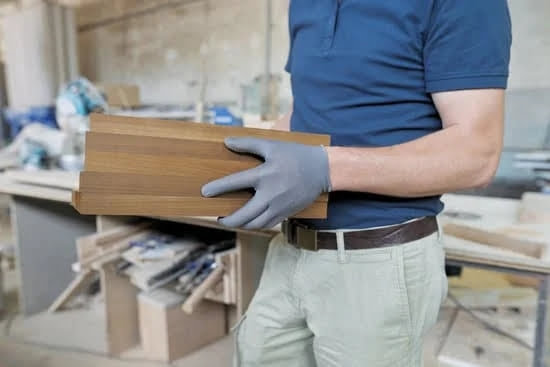Explore the Different Types of Woodworking Hand Saws
At first glance, the term “woodworking hand saw” might make you think of just one type of saw ” but in fact this phrase can encompass a wide range of different saws that each serve specific purposes and aid woodworkers in crafting or repairing a variety of wood pieces. Below are some common examples of these kinds of hand saws and how they are used in woodworking:
• Crosscut Saws ” Used for cutting across the grain lines, these saws come in two main types: ripsaw and backsaw. Ripsaws have coarse teeth designed to cut quickly against the wood’s grain direction while backsaw blades are narrower than ripsaws and feature finer teeth for a smoother finish.
• Tenon Saw ” This is considered one of the most useful types as it can both rip through wooden boards cleanly and create extremely precise joints between them. Perfect for furniture making, this type is often characterized by its small blade size and stiff blade typically around 12 inches (30 cm) long.
• Coping Saw ” Intended to help finish details such as curves, intricate perforations, or even cutouts along edges, coping saws have blades that can easily be removed to allow room to reach more difficult spots Regular coping saw blades measure 9-14 inches (22-35cm) long but much smaller models exist too which can get into tight spaces!
• Bow Saw ” Available in both large and small sizes, bow saws include long handles along with thin blades ideal for consistent ripping for deeper cuts like those found commonly on larger furniture pieces. Some bow saw variations also feature cranked handles which expand the usable length or make it easier to access awkward angles (such as an area behind furniture).
• Japanese Hand Saw” These are much more lightweight than conventional western-style handsaws; they possess many additional features such as softer steel that remains flexible even when used multiple times along with replaceable (aka kataba) razor-sharp blades that help maintain accuracy during complex adjustments like curves or tight corners.
Comparison of Different Hand Saws
There are several types of hand saws available to those interested in woodworking. They come in a variety of materials and designs, each offering its own advantages and disadvantages. Here is a summary of the different types of hand saws that can be used for woodworking:
Crosscut Saw: A crosscut saw is a versatile saw designed to cut across the grain of wood rather than along it. It has a very small blade, so it is relatively lightweight and easy to use while still being precise enough for accurate cuts. The downside is that it can be hard to push through thicker or harder woods.
Rip Saw: A rip saw is designed for cutting along the grain rather than across it, making it ideal for straight cuts on boards and logs. Its teeth are longer and more widely spaced at the top compared to those at the bottom ” this makes them more aggressive when creating large-scale cuttings but less precise than other saws with smaller blade teeth.
Compass Saw: This type of saw has a small, specialized blade with closely-spaced teeth that allows for cutting intricate shapes in thin material such as plywood and veneers. It allows you to make curved lines and tight corner cuts without sacrificing accuracy. While very sharp, the fine blades are brittle making them difficult to sharpen and replace if they become damaged or broken.
Coping Saw: Like the compass saw, this one also has a specialized blade with closely packed teeth but differs in shape; instead of having an arched or curved blade, copying saws have an irregularly shaped blade allowing them to bore out already existing holes as well as create curves easily. Unfortunately, these require much patience and practice due to their fragility and tediousness but are great choices if going multi-directional with intricate cuts as they have replaceable blades available ranging from fine, medium coarse depending on your needs!
Fret Saw: A fret saw is similar in design to both a coping saw and a compass saw due to its small blades capable of creating intricate curves yet lacks any specific hole drill feature like most other varieties do not possess; opting instead for greater control over line drawing due to its higher tension which may contribute additional stability when cutting thick pieces! Furthermore this one can also easily make fairly deep straight cuts if need be whilst maintaining great precision unlike basic all purpose handsaws whose applications are limited mostly towards rougher carpentry tasks such as demolition tiles etc.. Last but not least fret Saws tend be safer overall than powered jigsaws ” though there is some arm fatigue involved from all its vibration during prolonged cutting sessions!!
Tips on Identifying and Buying Quality Hand Saws
When buying a hand saw, there are a few tips to help you identify and select the best one for your woodworking needs. Before selecting a hand saw, you should first determine what type of hand saw is necessary. There are several types of hand saws including: crosscut, rip, tenon, coping, dovetail, and veneer saws.
Crosscut saws are used for cutting across the grain of wood. They have thin blades with multiple teeth that cut on both the forward and backward strokes. Rip saws are designed to cut along the grain of wood and have thick blades with fewer teeth that only cut on the forward stroke. Tenon saws are ideal for making precise cuts in tight spots, such as when fitting tenons into mortise joints. Coping saws generally feature an adjustable frame with interchangeable blades suited for intricate cutting of thin material like veneer or marquetry patterns. Dovetail saws have thin bladed designed for cutting precise dovetail joints in joinery applications. Lastly, Veneer saws can have very large blade sizes and removable inner sections so they may be adjusted to different widths making them perfect for slicing through delicate pieces of veneer without splintering it.
Once you know which type or types of saw is needed, you need to assess its quality ” a good quality hand saw should be well balanced and feel comfortable in your hand; its blade should be free from nicks; its handle should be securely attached to the blade; the teeth should all line up correctly; it shouldn’t flex too much or vibrate during operation; and it should come with a sharpened edge out of box ready for use right away.
Key Considerations When Selecting a Hand Saw
When selecting a hand saw, there are several key considerations to keep in mind. The most important factor is the type of woodworking project you will be using the saw for – different saws are designed for different tasks.
For larger woodworking projects like cutting thick logs, a cross-cut saw is best. This style of saw has teeth that cut across the grain of the wood, which allows it to easily handle heavier material. For finer and more intricate cuts, like those needed for furniture making, a dovetail or backsaw might be better suited for the job. These thinner blades feature smaller, more angled teeth so they can make accurate and intricate cuts without leaving large chunks of wood behind.
Another consideration when selecting a hand saw is its size and shape. The size needs to match the scope of your project and fit comfortably in your hands while cutting comfortably. The shape of a traditional saw blade generally follows an arched or slightly curved pattern, allowing it to move through the wood with minimal resistance. Some designs may be straight or have additional features like specialised notches to help cut material quicker and easier.
Finally, check any saw’s construction materials before making your purchase; these should suit whatever type project you’re taking on and ultimately determine durability over time use.
Demonstration of Using Different Hand Saws
Hand saws are essential in woodworking and come in many different shapes and sizes, each serving a unique purpose for a variety of projects. The two most common types of hand saws are the crosscut saw and the ripsaw, which can be identified by the number of teeth per inch (tpi) they have.
Crosscut saws have more teeth per inch than rip saws, making them better suited for working with hardwood or plywood. The increased amount of teeth provides additional accuracy to the cuts that it makes and results in cleaner edges. Therefore, this type of saw is ideal when cutting across grain lines or when joining boards together with precision.
Ripsaws have fewer teeth than crosscut saws, which allow them to efficiently cut along grain lines found in softer woods such as pine or cedar. When using this type of saw, it’s important to remember that its bigger gullets between each tooth removes more material from a cut than a crosscut does, so extra care should be taken when pushing it through the wood.
When demonstrating how to use different types of hand saws, it’s important to be aware of their key features and benefits. Begin by teaching how the blade shape and tooth size varied depending on whether you’re using a crosscut or ripsaw; then move on to explaining how an inefficient gripping technique may lead to poor results; finally explain the importance of regularly sharpening these tools in order for them perform effectively over time.
Creative Ways to Utilize Hand Saws
Woodworking hand saws are essential tools for cutting and shaping wood. There are a variety of different types of hand saws, each designed to cut certain materials in a certain way. Here are some of the most common types:
• Tenon Saw: This type of saw has a small blade and narrow kerf, making it ideal for making precise cross and rip cuts through hard woods.
• Rip Saw: A large-toothed saw designed to make fast rough cuts along the grain of the wood.
• Dovetail Saw: An extremely sharp narrow blade that can easily cut perfect dovetail joints into the face or edges of the material being worked on.
• Cross Cut Saws: A two-handle saw that is used for cutting long straight lines across components such as plywood, panels and boards.
Besides using these hand saws for basic carpentry and woodworking projects, they can also be used in creative ways to give your project a unique look and finish. Here are some creative ideas on how you can utilize hand saws in your woodworking projects:
• Accent Pieces Using intricate patterns with a dovetail or tenon saw to create an interesting accent feature on furniture pieces or wall art pieces.
• Intricate Wooden Puzzle Making intricate wooden puzzles out of different types of woods that have been shaped using various types of hand saws such as coping and dovetail saws.
• Signage Utilizing a combination of different types of handsaws to create unique custom signs by carving out letters or shapes from various types of plywood or boards, then painting them afterwards with your desired color scheme.
• Wall Art Carve complex patterns into thin sheets of plywood using crosscut or rip saws arranged in any desired pattern for dynamic wall art decor.
Protecting Yourself and Preventing Injury when Working with Hand Saws
When working with hand saws, it is important to take safety precautions. First and foremost, wear safety glasses or goggles. Hand saws can cause injuries if pieces of wood being cut fly off in the wrong direction. In addition to eye protection, it is a good idea to wear gloves when working with hand saws. Gloves are important as they will reduce the risk of blisters, cuts, and splinters when using the saw. When using power tools, ensure that they are used properly according to manufacturers’ instructions and with due care and attention at all times. It is also advisable to use hearing protection such as ear plugs or muffs when using noisy hand saws such as jigsaws and chainsaws. Ensure that your workspace is tidy and free of clutter which can be a trip hazard. Finally, always check that blades are sharp so that you can work efficiently without putting unnecessary strain on yourself or your arms. Take regular breaks while working so as not to overexert yourself and risk injury or fatigue from prolonged periods of extended use.
Best Practices for Care and Maintenance of Hand Saws
There are many types of hand saws used in woodworking, each with a specific purpose. Some of the most common hand saws include: hacksaw, crosscut saw, coping saw, keyhole saw and jigsaw.
Hacksaws are commonly used for cutting through materials such as metal and plastic, but can also be used to make quick and smooth cuts in softwood. Crosscut Saws are designed for making long cuts in wood or other lumber and should be used for accurate joinery work. Coping Saws are suited for precision work on detailed or ornate patterns in softwood or thin hardwoods but require skill to use effectively. Keyhole Saws have a narrow blade designed to cut into tight corners and small curves without too much effort. Lastly, Jigsaws are versatile machines that allow you to make incredibly precise cuts with varied shapes on thicker pieces of wood.
The best way to take care of your hand saws is to ensure they are always kept clean and sharp; dull blades will not only reduce the quality of your work but can also potentially create an unsafe situation while working with them. Before use, be sure to check the teeth of your blade – if they’re unevenly worn or bent you should either replace them or sharpen them depending on the severity. Many times when storing a hand saw it can be useful to cover it so that rusting does not occur due to moisture – if this happens it will mean replacing blades more often than necessary which can become costly over time. Hand tools need maintenance like any other piece of equipment so make sure you take the time to give them proper attention!

Hi everyone! I’m a woodworker and blogger, and this is my woodworking blog. In my blog, I share tips and tricks for woodworkers of all skill levels, as well as project ideas that you can try yourself.





